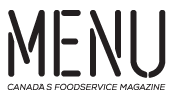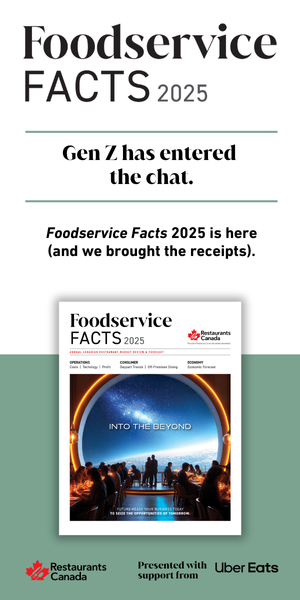Tech Equity
Making technology accessible for all operators strengthens the entire restaurant ecosystem.
For years, the conversation around restaurant technology has revolved around innovation — faster systems, smarter data, frictionless service. But as digital transformation accelerates, a deeper question has emerged: Who gets left behind, and what does that mean for the future of hospitality?
In an industry defined by tight margins and tighter schedules, the technological playing field has long been uneven. Large chains can afford in-house IT teams and custom integrations. Independent operators, meanwhile, often face a harder equation—balancing day-to-day survival with the long-term value of modernization.
This divide isn’t just about tools—it’s about time, training and trust. For many operators, digital adoption competes with the daily urgency of keeping the lights on. This means innovation is likely to cluster at the top of the market, while independents risk being excluded from the efficiencies shaping the industry’s future.
“For restaurants, and especially for independent operators, adopting new technology is a careful balance between a short-term challenge and long-term value,” says Amer Matar, Chief Technology Officer at TouchBistro, a Restaurants Canada Preferred Partner. “The most significant barriers are typically cost, complexity, and time. Many operators face tight margins, making the upfront investment in technology daunting. The learning curve can also be steep, with staff training and integration into existing workflows requiring time that operators simply do not have. On top of that, the sheer volume of options can be overwhelming. Without a clear understanding of their specific needs, operators risk wasting money on tools that don’t align with their business model.”
Tech equity isn’t actually about fairness, it’s about economics, and for Canada’s $124-billion restaurant sector, this imbalance matters. When technology is accessible only to those with scale, it creates structural disadvantages that ripple across supply chains, labour markets, and local communities.
“To overcome these barriers, operators need solutions that are cost-effective, user-friendly, and tailored to their unique needs, with robust support to ensure smooth implementation,” Matar shares. “Working with the right technology partner can actually streamline many of these challenges. While these barriers might seem daunting at first, an integrated POS solution can work within an operator’s business model to overcome any concerns they have, streamline day-to-day operations, and help them build lasting success.”
When technology is built around real workflows, it returns the focus to people — both staff and guests. Smart scheduling tools prevent burnout and help stabilize retention. Centralized dashboards replace mental math with clarity. Digital training tools don’t just save time; they lift confidence and consistency across the team. In this way, tech equity becomes cultural equity—ensuring that every worker, from line cook to owner, benefits from the same clarity and control.
But in a market saturated with eye-catching apps and broken promises, discernment is essential. “With countless platforms promising efficiency, operators need a clear framework to identify tools that truly add value,” says Matar. “Start by defining business goals, whether it is improving table turnover, growing the business to multi-location or expanding into catering. Then, evaluate how each tech stack aligns with these objectives. Ask critical questions like whether this tool solves a specific pain point, whether it is scalable, and how easily it can integrate with existing systems. Consider the total cost of ownership, including hidden expenses like training and maintenance.”
This disciplined approach—purpose first, platform second—is what makes technology equitable. It puts agency back in the operator’s hands. “Additionally, seek out user-friendly solutions that won’t overwhelm a team new to the technology. A demo can help gauge ease of use and fit. Also, prioritize platforms with strong customer support and training resources to ensure a smooth transition. Finally, look for measurable ROI and whether the technology can provide data-driven insights to track its impact,” he adds.
At its heart, tech equity is about empowerment, not automation. It’s about designing systems that make running a restaurant not just easier, but fairer. When every operator, regardless of size, has access to tools that simplify complexity, they can focus on what makes hospitality irreplaceable: warmth, creativity, and human connection.
In that sense, technology becomes an equalizer or force that strengthens both community and adds sophistication to competition. Because when technology works for everyone, hospitality wins.


Five Signs Your Tech Is Working for You
You’re saving time, not losing it.
Technology should simplify operations, not stack on extra steps. The right tools cut down admin hours and eliminate repetitive tasks.
Your team adopts it quickly.
If staff can use it confidently after minimal training, you’ve found the right fit. Good tech feels intuitive from day one.
It integrates smoothly.
Your systems talk to each other. Data moves seamlessly between POS, payroll, and inventory — no more manual uploads or duplicate entry.
You can measure the return.
Every tool should earn its keep. Look for tangible gains in labour efficiency, waste reduction, or sales growth.
It makes hospitality easier.
When technology fades into the background, your people can shine in the foreground — where true hospitality happens.
Hospitality runs on people — but the right tools make every shift smoother. Check out this showcase to explore a few of the leading technologies closing the gap between restaurant potential and performance with scalable systems that cut friction, save hours, and keep your focus where it belongs: on your guests.









